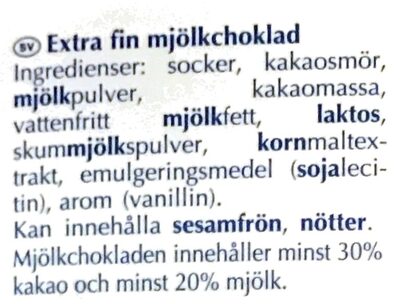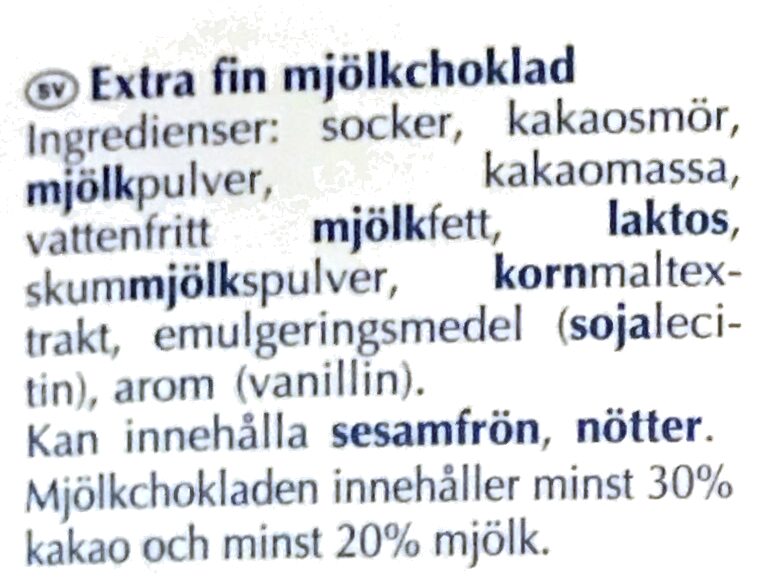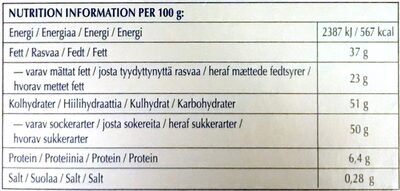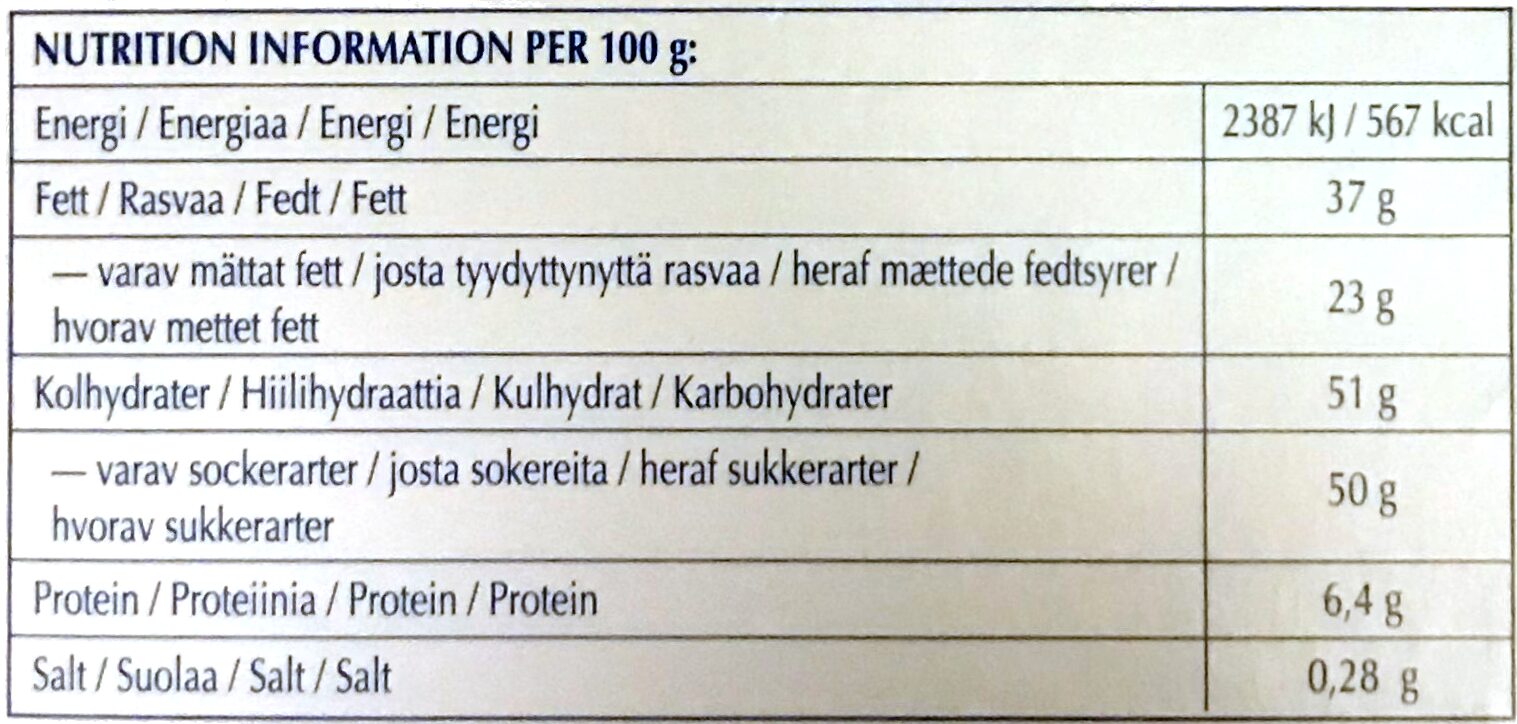Lindt Excellence Extra Creamy Milk - 100 g
This product page is not complete. You can help to complete it by editing it and adding more data from the photos we have, or by taking more photos using the app for Android or iPhone/iPad. Thank you!
×
Streckkod: 3046920011013 (EAN / EAN-13)
Vanligt namn: Extra fin mjölkchoklad
Kvantitet: 100 g
Förpackning: en:Metal, Papper, Återvinningsbara metaller, Aluminium, en:Card-sleeve
Varumärken: Lindt
Kategorier: Snacks, Söta snacks, en:Cocoa and its products, Konfekt, Choklad, Mjölkchoklad, en:Chocolates with extra fine milk
Etiketter, certifieringar, utmärkelser: Tillverkad i Frankrike
Tillverknings eller bearbetningsplats: France
Spårbarhetskod: EMB 64422 - Oloron-Sainte-Marie (Pyrénées-Atlantiques, France)
Butiker: Carrefour, Tesco, Woolworths, Coles, Big-W
Länder där såld: Australien, Danmark, Finland, Frankrike, Nya Zeeland, Norge, Sverige, Storbritannien
Matching with your preferences
Miljö
Carbon footprint
Förpackning
Transportation
Report a problem
Datakällor
Produkt tillagd den av stephane
Senast ändrad produktsida på av lcmortensen.
Produktsida också redigerad av archanox, dahlqvist, ecoscore-impact-estimator, foodless, inf, jeremy64, jumati, kiliweb, musarana, packbot, quechoisir, remilk, roboto-app, rosewilde, swipe-studio, tacinte, teolemon, yuka.WmZCYUZKc2grUGdLdlAwWndUMkkyUEJGN01HS2NYMlZMdW9NSVE9PQ, yuka.sY2b0xO6T85zoF3NwEKvllRrd-fShyD9JhDfoG_TmcusKa7kf9Js0NH9Yqs.










